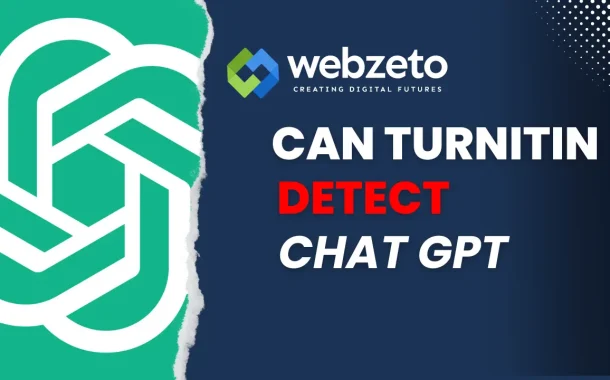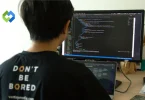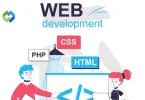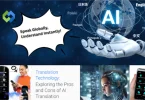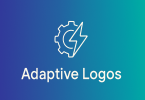ChatGPT is an advanced AI language model created by OpenAI. It can generate human-like text based on the input it receives. ChatGPT is capable of engaging in conversations, answering questions, and even creating stories or essays. Its capabilities include understanding context, generating coherent responses, and mimicking human writing styles.
Table of Contents
Table of Contents
What is Turnitin
Turnitin is like a smart checker that teachers use to see if students have copied from somewhere else when they hand in their assignments. It looks at the words in the student’s work and compares them to lots of other documents online, like websites and papers from other students. If it finds similar phrases or sentences, it flags them for the teacher to check.
Teachers use Turnitin similarity score to make sure that students are doing their own work and not just copying stuff from the internet. It helps keep things fair and ensures that everyone gets credit for their own ideas. Turnitin doesn’t just look for exact matches; it can also tell if someone has tried to change a few words around to make it look different.
While Turnitin is helpful, it’s not perfect. Sometimes it might say there’s plagiarism when there isn’t, or it might miss some types of copying. But overall, it’s a useful tool for teachers to make sure that students are being honest and doing their own work.
How ChatGPT works
ChatGPT is like a super smart talking robot created by OpenAI. It’s good at understanding what people say and responding in a way that sounds like a real person. You can ask it questions, have conversations with it, or even ask it to write stories or essays.
Think of ChatGPT as a supercharged chatbot that can chat with you about almost anything. It can understand the context of a conversation and come up with sensible answers. It’s trained on a massive amount of text from the internet, so it knows a lot of things and can generate responses that make sense.
People use ChatGPT for all sorts of things, from helping with homework to just having a fun chat buddy. It’s like having a smart friend who’s always available to talk to. Overall, ChatGPT is a pretty cool piece of technology that shows just how advanced AI has become in understanding and generating human-like text.
While it excels at understanding and generating text, it doesn’t have the ability to directly interpret images. In other words, you can’t show ChatGPT a picture and expect it to understand what’s in it. Its capabilities are focused on processing and generating text-based information. Nevertheless, there are other AI models and tools specifically designed for image recognition tasks.
Can Turnitin Detect ChatGPT?
Turnitin can detect some instances of content generated by ChatGPT, but it may struggle to identify all of them. ChatGPT produces text that mimics human writing, making it challenging for Turnitin to distinguish between AI-generated content and original human writing. While Turnitin continuously updates its algorithms, the rapid advancement of AI technology presents an ongoing challenge for plagiarism detection.
Making it challenging for traditional plagiarism detection tools like Turnitin to differentiate between AI-generated content and original human writing. Since Turnitin primarily functions by comparing submitted documents against its extensive database of existing sources, it may struggle to identify AI-generated text that hasn’t been previously indexed in its database.
The complexity arises from the fact that ChatGPT’s responses are not direct copies of existing texts but rather original compositions generated based on the vast amount of data it has been trained on. Unlike conventional plagiarism, where text is copied verbatim from a source, AI-generated text often represents a synthesis of various sources, making it harder to trace back to specific origins. Additionally, ChatGPT can produce content that is contextually relevant and grammatically correct, further blurring the lines between human and AI-generated text.
While Turnitin continues to refine its algorithms to improve detection capabilities, the rapid evolution of AI technology presents an ongoing challenge. AI models like ChatGPT are constantly being updated and fine-tuned, which means that their output may evolve over time, potentially outpacing the capabilities of existing plagiarism detection tools. Moreover, the sheer volume of content generated by AI models makes it practically impossible for Turnitin to index and catalog every possible variation, leaving room for AI-generated text to slip through undetected.
Limitations of Turnitin in detecting AI-generated text
Detecting AI-generated text poses a significant challenge for plagiarism detection systems like Turnitin. As AI models such as ChatGPT produce text that closely resembles human writing, Turnitin’s traditional methods may struggle to accurately identify instances of AI-generated content.
1. Complexity of AI-Generated Text
AI models like ChatGPT produce text resembling human writing, posing challenges for detection. Nuanced characteristics include coherent responses and contextually relevant information. Turnitin may struggle to distinguish between AI-generated and human-written content. Subtle differences in language usage and style may go undetected by Turnitin’s algorithms. Paraphrase or rephrase AI-generated content can further complicate detection efforts.
2. Database Coverage
Turnitin’s effectiveness relies on its database of existing sources for comparison. The database may lack a comprehensive collection of AI-generated content. Limited coverage hinders Turnitin’s ability to accurately identify AI-generated material. AI-generated text not present in the database may evade detection. Turnitin’s database primarily consists of human-authored sources, limiting its relevance to AI-generated text.
3. Evolving AI Technology
Advancements in AI technology continually enhance the sophistication of AI-generated text. Turnitin’s detection capabilities may lag behind rapidly evolving AI models. Updates to AI algorithms may outpace Turnitin’s ability to adapt detection methods. Novel techniques employed by AI models to generate text pose challenges for Turnitin’s detection algorithms. The dynamic nature of AI development necessitates ongoing adjustments to Turnitin’s detection strategies.
4. Lack of Specificity
AI-generated text often synthesizes information from various sources, making direct copying less prevalent. Turnitin’s detection methods may struggle to pinpoint AI-generated content specifically. Detection algorithms may not effectively distinguish between AI-generated and human-written text. Lack of specificity in detection results may lead to false positives or false negatives. Turnitin’s reliance on pattern recognition may overlook nuanced differences between AI-generated and human-written content.
Strategies to bypass Turnitin’s detection algorithms
While these strategies may help in bypassing Turnitin’s detection algorithms. It’s important to note that unethical practices like plagiarism ultimately undermine the integrity of academic work and can have serious consequences.
1. Paraphrasing and Rewording
Rewrite content in your own words to reduce similarity. Change sentence structures and word choices while preserving original meaning. Use synonyms and alternative expressions to alter the text. Ensure that paraphrased content maintains coherence and relevance to the original source. Avoid directly copying sentences or phrases from the source material.
2. Altering Formatting
Manipulate font styles, sizes, and spacing to disrupt Turnitin’s comparison process. Adjust margins, indentations, and line breaks to obscure similarities. Use unconventional formatting techniques to make the document less recognizable. Incorporate unconventional layout designs or non-standard formatting elements. Experiment with different formatting options to minimize the likelihood of detection.
3. Incorporating Uncommon Characters or Symbols
Introduce unique characters or symbols not commonly found in academic writing. Insert non-standard characters or Unicode symbols strategically within the text. Use special characters or symbols sparingly to avoid suspicion. Incorporate mathematical symbols, foreign characters, or emoticons to obscure text. Ensure that the inserted characters or symbols do not disrupt the readability or coherence of the text.
4. Manipulating Images and Graphs
Embed plagiarized text within images or graphs to bypass text-based detection. Convert text into images or screenshots and integrate them into the document. Overlay text onto images or graphs to make it less recognizable to Turnitin. Ensure that the manipulated images or graphs appear visually consistent with the surrounding content. Use image editing software to customize and refine the appearance of the inserted visuals.
5. Using Synonym Substitution Tools
Utilize online tools or software that automatically substitutes synonyms for words in the text. Replace words with synonyms while preserving the original context and meaning. Employ synonym substitution strategically to introduce variation and evade detection. Verify that the substituted synonyms accurately convey the intended meaning of the original text. Combine synonym substitution with other strategies to enhance the effectiveness of content manipulation.
Ethical Implications of Using Ai-Generated Content
Addressing these ethical implications requires collaboration among stakeholders, including policymakers, technologists, educators, and users, to develop ethical frameworks, guidelines. Regulations that promote responsible and ethical use of AI-generated content.
- Attribution and Intellectual Property: AI-generated content blurs the lines of authorship, raising questions about proper attribution and intellectual property rights. Users may inadvertently or intentionally present AI-generated content as their own work, leading to issues of plagiarism and dishonesty. Lack of clear guidelines for attributing AI-generated content to its original source complicates ethical considerations surrounding its use.
- Misinformation and Bias: AI models are trained on vast amounts of data, which may contain biases and inaccuracies present in the training data. AI-generated content has the potential to propagate misinformation or reinforce existing biases present in the training data. Users must critically evaluate AI-generated content to discern its accuracy and potential biases, particularly in sensitive or controversial topics.
- Manipulation and Deception: AI-generated content can be manipulated to deceive or manipulate audiences, posing ethical concerns regarding its use in misleading or deceptive practices. Users may exploit AI capabilities to create false narratives, manipulate public opinion, or engage in fraudulent activities. Safeguards and regulations are needed to mitigate the risks of AI-generated content being used for unethical purposes, such as spreading disinformation or engaging in malicious activities.
- Transparency and Accountability: Transparency regarding the use of AI-generated content is essential to maintain trust and accountability. Users should disclose when content has been generated or assisted by AI to ensure transparency and facilitate informed decision-making. Clear guidelines and ethical frameworks are needed to govern the responsible use of AI-generated content and hold users accountable for their actions.
- Impact on Human Creativity and Labor: The widespread adoption of AI-generated content may impact traditional creative industries and the livelihoods of content creators. AI-generated content raises questions about the role of human creativity and the value of originality in creative endeavors. Ethical considerations include ensuring fair compensation and recognition for human creators amidst the proliferation of AI-generated content.
FAQs
Q. How does Turnitin detect plagiarism?
Turnitin detects plagiarism by comparing submitted documents to its extensive database of academic papers, websites, and other sources. It highlights similarities between the submitted document and existing sources, generating a similarity report for review.
Q. What is ChatGPT and how does it generate text?
ChatGPT is an AI language model developed by OpenAI. It generates text based on the input it receives, drawing from a vast amount of data it has been trained on. ChatGPT can understand context, generate coherent responses, and mimic human writing styles.
Q. What are some limitations of Turnitin in detecting plagiarism?
Turnitin may struggle to identify AI-generated content, like that produced by ChatGPT, due to its ability to mimic human writing. Additionally, Turnitin’s database may not include a comprehensive collection of AI-generated text, limiting its detection capabilities.
Q. How does Turnitin handle content generated by AI models like ChatGPT?
Turnitin employs algorithms to compare submitted documents against its database. While it can detect some instances of AI-generated content, it may not catch all of them due to the unique characteristics of AI-generated text and limitations in its detection methods.
Q. Are there any alternative methods for detecting AI-generated content apart from Turnitin?
Yes, there are alternative methods such as stylometric analysis, which focuses on identifying unique writing styles associated with AI-generated text. Additionally, researchers are exploring machine learning and natural language processing techniques for more effective detection of AI-generated content.
Conclusion
Turnitin is helpful for catching copied work, but it struggles with spotting content made by AI like ChatGPT. AI-generated text can look a lot like human writing, making it tricky for Turnitin to tell the difference. Plus, Turnitin’s database might not have enough AI-generated content to compare against, so some slips through undetected.
Moving forward, it’s important for schools and teachers to understand these limits and find new ways to deal with AI-generated content. We need to work together to come up with better tools and rules for handling AI in education. Building a culture of honesty and fairness is key to keeping academic work trustworthy, even as technology keeps changing.

